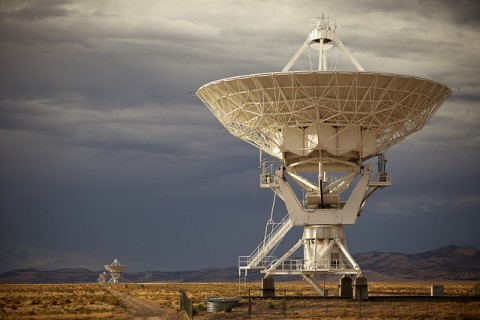The Chinese Academy of Sciences (CAS) spoke about a new project, within the framework of which the world’s largest fully controllable radio telescope will be built: its diameter will be 120 meters. Such a device, as noted, will allow scientists to take a closer look at the study planets and asteroids.

China has kicked off of a second phase of construction to enhance the capabilities of what is already the world’s largest single-dish radio telescope.
The Five-hundred-meter Aperture Spherical Telescope (FAST), situated in a karst region in Guizhou, southwest China, has been operating since January 2020. But now a second phase will add 24 new moveable radio telescopes, each with a diameter of 131 feet (40 meters). Construction officially started on Sept. 25, on the eighth anniversary of FAST’s completion.
This expansion, named the FAST Core Array, aims to make use of the “quiet” electromagnetic environment that exists within a 3-mile (5 kilometers) radius around the telescope, according to China Central Television (CCTV). The site was originally chosen for the area’s remote location and natural topography. When combined into an array, the new telescopes will enhance resolution and detection capabilities.
A 120-meter diameter radio telescope is under construction in China and, once built, will be the world’s largest fully steerable device of its kind, according to the Chinese Academy of Science (CAS).
The purpose of the telescope is to help scientists better understand planets and asteroids, according to CAS.
The ‘scope will receive electromagnetic waves from celestial bodies and send its own energy into the heavens to allow accurate measurement of distances Earth and other planets.
Other radio telescopes with this capability include the defunct Arecibo Observatory in Puerto Rico, NASA’s Goldstone Deep Space Communications Complex, and The Very Large Array (VLA) in New Mexico.
The telescope will be located in the Chinese city of Huadian, Jilin Province. While the project is in progress at the initial stages: a part of the foundation is completed, while the installation, adjustment and testing of the telescope itself is scheduled to be completed in 2028.
Jilin Radio Telescope will be a single device that will be able to receive electromagnetic waves from celestial bodies and transmit these signals into space, which will allow you to accurately measure distances to the Earth and other planets.

While the Jilin telescope is a significantly large single device, the SKAO is an ensemble of over 130,000 antennas in Australia, plus another 200 in South Africa. As its name suggests, its dishes cover a total area of one square kilometer.
That date coincides with projected completion dates for the Square Kilometer Array Observatory (SKAO). Some elements are already in operation, but the end of construction won’t happen until 2028 or 2029.
The Five-hundred-meter Aperture Spherical Telescope (FAST), located in China, is currently the world’s largest single-dish radio telescope. It was completed in 2016, but extensive testing and calibration meant it only began operations in 2020.
FAST’s 500-meter dish, while larger than the forthcoming Jilin radio telescope, is not fully steerable. The dish is located in a natural sinkhole, which gives it a mostly fixed orientation. It is designed to operate using a technique known as active surface control. It can be adjusted using a set of movable panels that allow for some flexibility in observing different regions of the sky.
Unlike the 305-meter Arecibo Observatory, which was a radar-based facility, FAST is designed primarily for radio astronomy – including studying cosmic objects like pulsars, galaxies, and black holes. Its dish allows it to collect incredibly weak radio signals from deep space.
Both the Green Bank Telescope in West Virginia and The Effelsberg Radio Telescope in Germany are fully steerable and have dish diameters of 100 meters.
The CAS revealed China is currently building smaller but fully steerable radio telescopes in locations such as the Changbai Mountain Protection and Development Zone of Jilin, Xigaze of Xizang Autonomous Region, and Qitai of Xinjiang Uygur Autonomous Region.
At the moment, the largest in the A spherical telescope with five-hundred-meter aperture (FAST), located in China. Its 500-meter antenna, although larger than the upcoming Jilin Radio Telescope, but it not fully manageable.















![TECNO PHANTOM Ultimate 2 shows spectacular triple bedchair concept [PHOTOS]](https://gizmodazzle.com/wp-content/uploads/2024/08/TECNO.jpg)